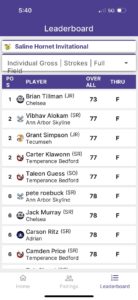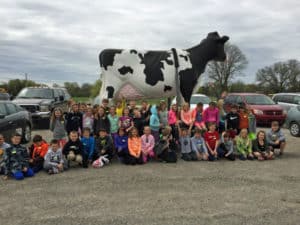
(Publisher’s note: Part 1 of this column published yesterday.)
By Jennifer Fairfield
Flowers
With the continued warmer-than-usual temps, you might still be able to get some mulch on flower beds that you didn’t quite finish up before the cold of November hit. Making sure that your plants have a good mulch protection is even more important when we have up-and-down temperatures, as it can help to prevent frost heave.
If the ground isn’t totally frozen, you may also still be able to get some bulbs in – I just planted some more crocus and allium in one of my beds, and can’t wait for them to come up in the spring.
Just as with your vegetable garden, start planning now for your flower beds. Are there areas that could use new (more) plants? Are there plants that need to be divided and replanted elsewhere? Did some plants not do well because they just weren’t in the right place?
Making a plan now can help you get right to work when spring arrives.
Another thing to think about for your flower beds is how they look right now. Does your garden have any winter interest, or is it all about spring and summer? Start thinking now about what you might add in the spring and summer to enhance how the beds look in the winter.
Having something beautiful to look at in the winter can really help get you through until you can be out there. Things to consider are evergreen shrubs as well as plants with winter color, such as red osier dogwood, or cranberry cotoneaster. Be sure to consider height, since there is a good possibility that low-growing plants might be covered with snow in the winter.

Trees and Shrubs
If you have evergreens that aren’t looking so good, they may be suffering from disease or pests. Colorado Blue Spruce are in serious distress all over Michigan due to a number of issues.
I planted 25 of them on my property 20 years ago, to act as a wind break. I fell prey to one of the most common issues in landscapes – over-planting of one species. So, when one of them started to die, the issues easily spread to the rest, and it became all but impossible to control. Now, I am having them removed and deciding what will go in their place.
Fortunately, I did interplant them with Norway Spruce trees that are still doing well, so I won’t have a totally bare area while whatever I plant grows up. MSU Extension provides lots of detailed information on the issues facing Blue Spruce in our state, along with some suggested alternatives.
I’m still deciding, but am leaning toward a combination of White Spruce (which are native to Michigan) and Swiss Stone Pine (which aren’t). I might also add a few of our state tree – Eastern White Pine – just because I love them. All of these should do well where I want to plant them, and can be great for windbreaks.
One of the often recommended trees for windbreaks – white cedar, or Arborvitae – won’t work for me. They are deer magnets, and I have lots of deer.
If you need to replace old trees or just want to plant new ones, now is a good time to think about what you might want to plant. Think about whether the trees you had were in the right place, or if you might need to try something else there. Or if you liked the variety, look to see if you have a better spot in your yard for it.
There is a saying among gardeners that goes “right plant in the right place.” That means taking into account the type of conditions a plant needs and the type of conditions you have in your yard before deciding that you just have to have a particular plant in a particular place.
If you put something in a spot that isn’t right for it, it is likely that it will not do well. Sometimes, it won’t do well even if it is in the right place, but if it’s in the wrong place, it is pretty much guaranteed.
Planning is the key to success here, and now is a great time to do that planning. There are a number of places to get information about plants, including the Missouri Botanical Garden’s Plant Finder. It’s a great way to find out about plants for your specific conditions.
I am also really fond of books, and can spend hours looking up plants in the many I own. Some of my favorite books are the ones we carry at the store that are specific to Michigan and the Midwest. They can be very helpful in determining the right plants for your conditions.

Indoor Plants
With outdoor gardening not something we can usually do much of in January, it’s a great time for taking care of indoor plants, which may have been a bit neglected while we were busy outdoors.
Make sure they are getting as much sun as possible now. The winter in Michigan doesn’t provide a whole lot of sun, and even our sunny days aren’t as bright as they are in the summer, so moving your plants to a south-facing window or putting them closer to other windows will help them get as much sun as possible. Just don’t let them touch the glass, as it can be far too cold for most plants.
Also, clean off any dust that has accumulated on leaves of your indoor plants so they can take better advantage of what sun they do get.
Give your indoor plants some humidity, too. Indoor air at this time of year is generally very dry, which is hard on plants. Provide them with a little extra humidity by putting a room humidifier near them or putting trays of water around them.
Just be careful that the humidifier isn’t blowing right on them or creating a cold draft.
For most indoor plants, this should be a time when they don’t need fertilizer, or need less. There are some plants, such as African violets, that bloom all year round, so need regular fertilization all year.
If you’re not sure what your plant needs, www.Houseplant411.com is a good website with lots of basic information, including fertilization needs, for a number of popular houseplants.
Being a book lover, my favorite resource for houseplant care is a book called “The Houseplant Expert” by Dr. D.G. Hessayon. It’s not a new book – mine goes back to 1991 – but the information in it is still relevant, and I rely on it all the time. You may not be able to find it easily, but your local bookstore can probably order it for you.

Birds
I never get tired of watching the birds in my yard. Keeping them coming is as easy as supplying them with food and water. Keeping your feeders filled in the winter provides the birds a reliable source of food, and provides you lots of entertainment.
Happy Gardening.















I love your articles…I always learn so much. Thank you for sharing!